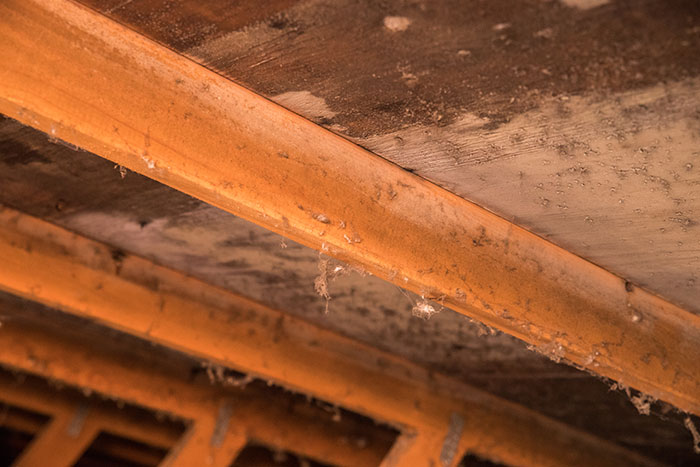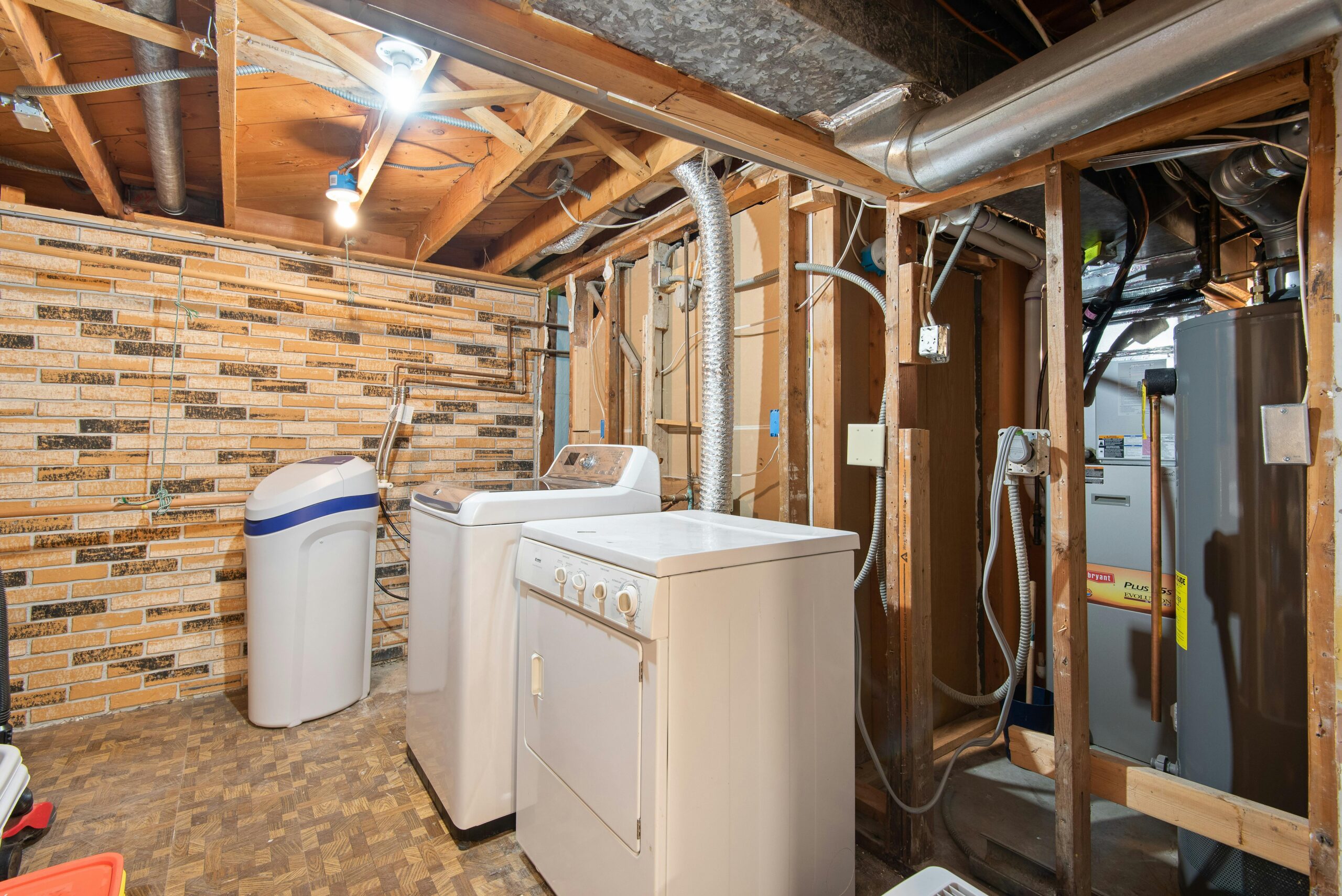Have you noticed a strange tinge on your walls? That’s not what they’re supposed to look like, you know. Mold is an unfortunate consequence of high humidity, bad ventilation, and water leaks. Often, it pops up quickly and quietly.
Several types of mold are common in the Pacific Northwest – and some are more of a threat than others. While mold can appear to be harmless, that is not always the case. Usually, mold is fairly unharmful, but if left for too long, it can become a major concern to the inhabitants of your home. The crawl space and attic are two places where mold is likely to grow and spread before a homeowner realizes it. Ensuring that your crawl space and attic are well-maintained and checked in periodically will keep you and the rest of your home healthy.
Read below as we run through various types of molds and some steps you should take if these are found in your home.
So, how do you know when you’ve got mold? And what are the different types of mold that you need to worry about?
In this article, we’ll outline the 10 types of mold that are helpful to know to ensure your house and health are protected.
10 Types of Mold Commonly Found in Homes
- Acremonium
Let’s start with a dangerous one. Acremonium mold is toxigenic and evolves in appearance over time. You’ll notice Acremonium in household systems as well as near humidifiers, window sealants, cooling coils, and drain pans.
It begins as a small moist mold and then grows into a powdery substance that can appear pink, grey, orange, or white.
If you’re exposed to this mold, it can have extremely dangerous effects. Acremonium exposure can lead to disease in bone marrow, the immune system, and other organs. And, it can have effects on your brain function because it’s a carcinogen. If you notice this type of mold or anything that is similar, contact a professional to help immediately.
- Alternaria
Alternaria is what you probably picture when you think about mold. It’s that velvet-textured dark green or brown mold. It grows in showers, bathtubs, and below sinks; anywhere moisture or water damage occurs. That’s why it’s got the distinction of being the most common type of mold in the world.
This mold spreads fast, as you may know, and it’s an allergenic mold that often causes asthma-like symptoms in those touched by it.
- Aureobasidium
Aureobasidium is another allergenic mold. It’s usually hiding behind wallpaper and painted wooden surfaces, and should not be touched. If touched, it can cause infections of the eyes, skin, and nails.
You’ll know this one from its distinctive pink, brown, or black color. As it’s left, it becomes a darker brown. It’s always good to check behind wallpaper and wooden trim when you move into a new house to look for Aureobasidium.
- Aspergillus
Aspergillus is a common mold in American homes. It’s known for long flask-shaped spores that can get quite thick. There are over 180 types of Aspergillus, so it comes in many different colors, making it hard to decipher.
It’s allergenic, but depending on which species and where you’ve got it, it can become toxic. Usual symptoms when Aspergillus gets bad are lung infections, asthma attacks, and respiratory inflammation. In rarer cases, species can produce deadly carcinogens.
- Chaetomium
Another common type of mold, Chaetomium kind of looks like cotton. Throughout its life, it’ll change from white to grey to brown, and then black. You’ll find it in water-damaged areas of the house like around a leaky roof, in your basement, or under your sink.
It can cause skin infections, but it is particularly dangerous for people with weak immune systems. You can stop Chaetomium from growing by keeping a constant eye on potential danger areas and fixing damage from moisture promptly.
- Cladosporium
Cladosporium is slightly different from other allergenic molds as it can grow in warm and cold conditions. You’ll find this mold in upholstery and carpets or under floorboards and cupboards. It’s recognizable by its suede-looking texture.
This mold, while not considered overly dangerous, can cause infections of the eyes, nose, throat, and skin. At its most dangerous, it can cause lesions, lung infections, and sinusitis.
- Fusarium
Like Cladosporium, Fusarium is also capable of growing and spreading in cold temperatures. It’s the type of pink mold you see on rotting food and compost but may also be found growing on wallpaper, carpeting, and other fabrics occasionally.
Minor exposure to Fusarium causes skin infections and allergic reactions like runny nose, itchy eyes, and sore throat. If you’re exposed to Fusarium for an extended period, it can cause much more serious health problems, such as bone infections and brain abscesses, both of which can be life-threatening.
Fusarium spreads quickly, so if you notice it in one place, investigate around your home for further mold growth. If you find Fusarium in your home, call a professional mold remediation company right away.
- Penicillium
Penicillium or penicillin mold is another classic-looking mold. It’s known for its greenish-blue color and velvet texture. It can be found in water-damaged areas and in wallpaper, ducting, and mattresses.
Exposure to this mold can cause respiratory issues like asthma and even pulmonary inflation. If it’s not eradicated, it spreads and can cause health complications in people with weak immune systems.
You may recognize the name penicillin from the antibiotic, but when exposed to it indoors for long periods, it can cause various problems.
- Stachybotrys
Aka “black mold“. Stachybotrys is that slimy-looking greenish-black mold that grows on wood, cardboard, paper, or wicker and in prolonged areas of high humidity.
Exposure to black mold can lead to difficulty breathing, sinusitis, fatigue, and even depression. Severe exposure can lead to painful headaches, nosebleeds, and chest tightness. If children are exposed to it, it can lead to pulmonary bleeding and neurological problems.
- Mucor
Mucor grows around HVAC systems and ducting due to condensation. It’s known for its grey spores and can cause or worsen asthma symptoms.
Rare cases have seen Mucor exposure lead to a fungal infection called Mucormycosis. This can damage the lungs, sinuses, and brain. This can become systemic in the blood and digestion systems if not treated quickly.
Different Types of Mold Lead to Different Problems
It’s safe to say that none of these types of mold are good for your home or your family – no matter how they end up there. Common reasons for mold growth include:
- Improper ventilation
- Blocked bathroom vents
- Crawl space flooding
- Attic flooding
- Natural moisture generated in all homes
Since each type of mold is unique, they may require different solutions. Similarly, the type of home and the area it is built on will impact the solution for removing and preventing mold.
Some homes may be at a higher risk of mold growth based on the location, how old the home is, and how maintained the house’s structure and ventilation.
How To Get Rid Of Mold In Your Home
The best way to clear your home of any type of mold is to contact a professional for mold remediation and removal services. You will want a team of experts that will attack the issue swiftly and effectively. The mold remediation and removal process includes:
- Assessment of the issue at hand
- Containment of the mold to ensure the spread of mold does not occur
- Removal of mold
- Cleaning of the crawl space or attic
- Prevention of future mold growth
At Crawl Pros, we can promptly take care of the mold problems in your attic and crawl space. No matter the type of mold in your home, you will want it gone as soon as possible. Our team is skilled in dealing with all types of mold and water-damaged areas of your home. Crawl Pros does not offer mold identification services as it requires specialized mold testing. Mold testing or sampling is the only way to know exactly what type of mold is in your home.
Read our article to learn more about how to get rid of mold in your crawl space.
Crawl Pros – Mold Removal & Remediation Services In Seattle & Portland
At Crawl Pros, your satisfaction is our top priority. Nobody wants mold growing in their home and we’re here to help remove mold from your home as quickly and efficiently as we can.
Do you have a mold problem? Give Crawl Pros a call at (866) 673-9626 or schedule a free estimate today. Our team will promptly schedule a time for our technicians to come to your property, assess the situation, and review the truthful details of the situation with you. We’ll then provide our top recommendations for resolving the issue and ways to prevent mold growth in the future.



